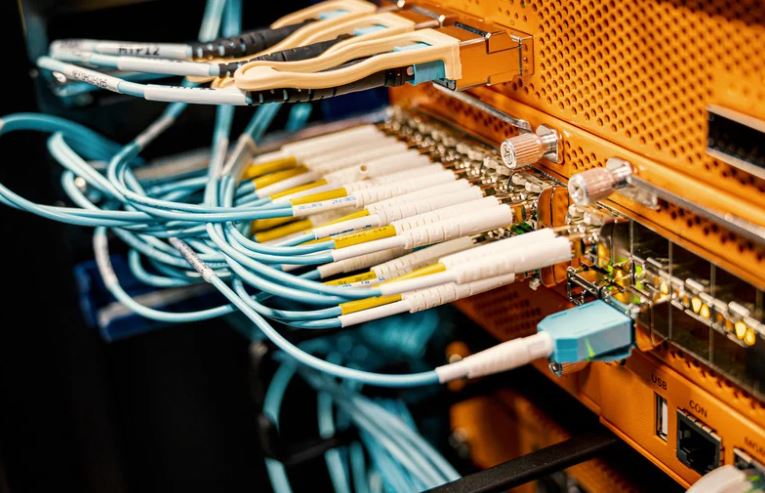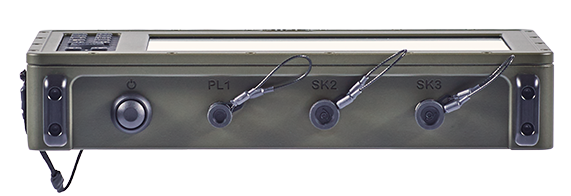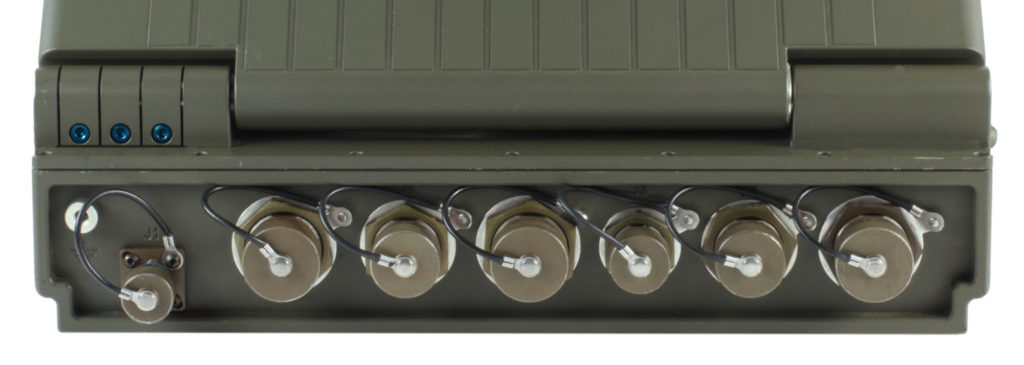Most of us will have experienced the frustration of upgrading to a new computer only to find that our trusty and perfectly serviceable peripherals—scanners, printers, hard drives, screens and the like—can no longer be connected.
The physical connections are different, requiring specific adapters that add complexity and are often from third-party sources, while the drivers may not be compatible with the new computer’s operating system. In some cases, they are no longer available, leaving no other option but to buy new devices that are compatible with the new computer.
It’s a problem many of us are familiar with, and it can be an expensive one to fix!
This problem is also prevalent in the defence world, but here it is magnified to another level. Military buyers acquire new computers in their hundreds, and the extra cost of providing adapters, and new peripherals can be enormous, especially in a sector where security, environmental and electromagnetic compatibility (EMC) requirements are tightly regulated.
Moreover, additional items that might be required to convert data and connector formats, together with new cabling and infrastructure, adds complexity to the overall system. As a result, logistics become more complicated, reliability and performance decrease, and costs soar further.
Now, imagine all of that connectivity could be served up in a single-box solution that can connect to any peripheral, with no need for converters, and all in a mil-spec, ruggedised package.
Building the universally-connected computer
That’s what GRiD Defence Systems offers; unique, low-risk solutions to problems that are faced by militaries everywhere as they update their hand-held or platform-based computers, and one which can save those forces huge amounts, while improving reliability.
GRiD—building on its long expertise that included inventing the first laptop computer—is an internationally respected provider of military-spec tablets and laptops for a wide range of defence applications, including installation in vehicles and boats, and use on the flight-line.
They can be connected to an almost limitless array of peripherals, including sensors, communications, databases, and diagnostic systems.
Read more: How does the military use rugged tablet computers?
Tailored to meet the exact requirements of the customer, each computer is built by GRiD in its secure workshop. The heart of the system is an Intel chip-set, supporting a Windows operating system, although Linux can also be used. The motherboard hosts the necessary converters, which can be expanded via up to four add-in PCIe cards which can handle high volumes of data traffic.
The computer is packaged in a chassis designed and manufactured by GRiD. The rugged casing is machined from a single aluminium block by a computer numerical control—or CNC—tool to ensure maximum precision. The apertures for the connectors are machined according to the requirements of the end-user. Typically they are located along the back of the case, but can be located underneath for certain applications. On larger laptops, they can also be mounted in side, front and rear panels protected by a sealing door.
Connectors and cables
Physically connecting the computer to peripheral devices is half of the solution. Many armed forces continue to use older-style ‘legacy’ connectors that are no longer prevalent among current system suppliers, but GRiD can supply connectors to match any cable requirement, regardless of its age. As an example, parallel port connectors are still in use with some customers, and GRiD can supply a modern computer system that is compatible with them.
The company offers connectors from a range of military-accredited suppliers such as Amphenol, Souriau, Glenair, Fischer and Lemo, as well as supplying regular commercial options, such as the letterbox-shaped, four-pin ‘Type A USB port’ well known to all computer users.
Common connector types regularly installed on GRiD’s rugged computers include the D38999 Series I, II and III, and 62GB connectors. The company also offers specialist connectors necessary to support high-speed interfaces such as HDMI and USB 3.0.

As well as the computers themselves, GRiD also supplies external cables, ensuring that the ‘pin-out’ configuration is correctly matched between the computer and the peripheral. Together with the internal computer configuration, this minimises the number of connections between the central processor and the peripheral itself,
increasing the reliability of the overall connection and reducing the effects of noise and attenuation, in turn facilitating EMC control.
When using large connectors with high pin-counts, multiple devices can be connected through a single connector with multiple cables attached, depending on the pin requirements of the particular interface.
The number of connectors that can be installed is limited only by the amount of ‘real estate’ available on the chassis itself, bearing in mind that in a ruggedised computer they are fitted with individual dust-caps to which access is required. Combined with the multi-connection capability, this allows the larger laptops to be configured with an almost infinite number of connector configurations, in turn allowing them to meet any end-user requirements.
Interfaces
The other half of the universal connection solution is being able to handle a wide range of interfaces. GRiD offers a range of interfaces that covers all of those used across the defence space, some of which have all but disappeared from commercial usage.
Connector interfaces that GRiD supports include those familiar to most people, including USB 2.0 and USB 3.0, RS232 and RS422, Ethernet in 100Mb and Gigabit forms, HDMI and VGA, and headphone outputs.
GRiD’s products are also compatible with bespoke military-grade connectors such as Mil Std 1553 – a Department of Defense (DoD) standard that defines the mechanical, electrical and functional characteristics of a serial data bus – and other specialist connectors including ARINC 429 that is mostly used for aerospace applications and CAN Bus that is mainly used in vehicles.
The computing elements of these interfaces are housed within the computer itself, negating the need for any external components that may be required. This not only saves space and power, but also removes the significant costs incurred in providing those components.
Simple, reliable, high-performing and secure. The GRiD Defence Systems single-box solutions allows defence forces to upgrade their computer equipment while continuing to employ their legacy expensive-to-replace peripheral devices and infrastructure, which in some cases may be 40 years old. It allows them to increase capability without having to spend large sums, while providing the ability to add more capacity and further functionality.
Want to learn more about GRiD and all of the connector and interface options available to you? Contact us if you require further assistance and our expert team can advise on +44 (0)1628 810 230 or drop an email to sales@griduk.com

